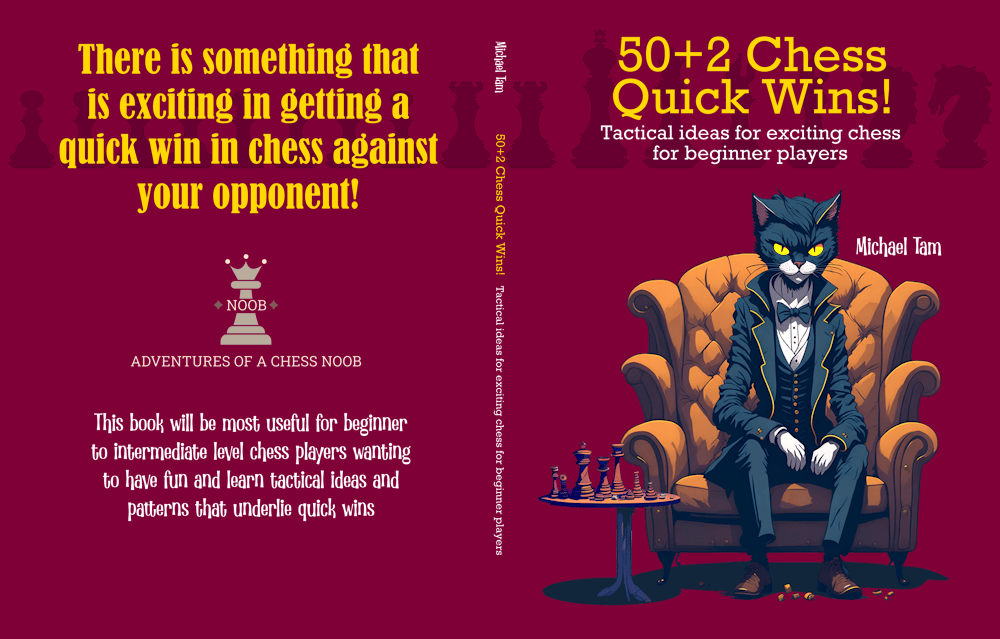
6 tips for better chess for beginners and noobs!
#ItalianGame
When I first started playing chess again a bit over 18 months ago, I was firmly at the “beginner” level. According to where my online rating settled at the time, I had an ELO rating of around 800 for 30 min rapid (my preferred format). The opening that I used by default was the Italian, and very commonly, I would end up in a Giuoco Piano Game.
Back then, I didn’t really understand or have a method for analysis, so I generally just tried to remember lines that “went bad” from actual games, as well as practicing against the computer from alternate positions – for instance, from their engine’s suggested better moves.
This worked okay for a while, and it was what finally got me over 1000 ELO. However, it was in this beginner-intermediate territory that I realised that the Italian wasn’t for me. The game became highly position after the opening, and often, I didn’t have a strategic or tactical framework of what to do next, or why a critical move that I made was bad, leading to the opponent’s win. Often the games became a matter of “who will blunder first”, and it wasn’t even entirely clear why a mistake was a mistake. This was when I started analysing games a bit more deeply, and learning the Vienna Game. Playing the mix of openings allowed for a better appreciation of different positions, tactics, and strategy.
I’ve reflected on this experience when I played this recent game where I was matched against a lower rated player between (1000-1100). I ended up winning this game at very high accuracy, 97.4% according to the chess.com algorithm (which at the time of this article, is Stockfish 15 NNUE at depth 30). The review chart brought back memories of my previous games at this level and a strong empathy with my opponent. Basically, completely equal for most of the opening, and then my opponent makes an error in the middle game (which I suspect wasn’t obvious to them), and it suddenly goes downhill!
Here are some important concepts that are demonstrated in this game:
(1) Unless there is a good reason, finish your development before making an attack
My opponent lashed out with their light square bishop before they had completed development, attacking my knight on move 7 (7. Bb5). Now, although this wasn’t actually a bad move according to Stockfish objectively, arguably, they also didn’t achieve anything.
What was gained? They captured my knight and damaged my queen-side pawn structure.
What was the cost? They lost the light square bishop (and thus, the bishop pair), and moved the bishop twice (3. Bc4; and then 7. Bb5) in the opening. Effectively, this means that they lost a step of tempo.
(2) Be careful of opening the centre before castling
On move 11, my opponent aggressively pushed forward their queen’s pawn (11. d4). This was the mistake from which they could not recover with an engine evaluation of [-2.44]. There are several concepts in this mistake, but we’ll start first with the idea of trying to open the board, before castling.
When the king is still in the centre, it becomes much easier for the opponent to target and attack with their pieces. Attacks on the king are “forcing” moves as checkmate, where the king cannot avoid an attack the next turn, is the literal win condition of chess. King safety should always be the first priority. This doesn’t mean that you shouldn’t take advantage of an opportunity if one arises before you’ve castled. However, if there’s no good reason to attack in the centre before castling, you probably shouldn’t.
In this game, this is particularly the case as I had, with the Black pieces, already castled. This meant that Black was ready to fight in the centre more than White, making the initiation of the attack by White premature.
(3) Make sure you count the trade sequence carefully before committing an attack
My opponent should have expected that we would end up trading pieces with their pawn push (11. d4). It’s important to count what happens before committing. When I was a beginner, miscounting (or not counting) was something that happened to me a bit, and I always felt silly at the end of the series, especially if I had initiated it.
If my opponent had counted carefully, they would have realised that I would be up a pawn from the exchanges, making it unfavourable for them.
(4) Sunk cost fallacy
If you do miscount and start the chain of exchanges (11. d4 exd4), don’t compound the mistake by thinking that it’s better to going through with it anyway! Each move needs to be seen in isolation. After my opponent lost the pawn on move 11, the evaluation was [-2.44], but after they continued the line by recapturing with the bishop (12. Bxd4), the evaluation plummeted [-3.89].
(5) Place pressure on the pinned piece
My developing move for my queen (14… Qf6) pinned my opponent’s knight to their rook. However, I couldn’t capture the knight immediately as it was defended by their queen. So, my following move was to “place pressure” by attacking the knight with an additional piece (15… c5). This resulted in a forcing situation where either the knight or rook would be captured the following turn.
(6) Keep an eye out for the basic tactics like pins, forks, and skewers
As before, these are potentially forcing moves and often need to be responded to. My opponent didn’t respond to the pin on their knight to their rook until it was too late. And the move that ended the game, was a skewer of the queen against a rook, attacked by a minor piece (bishop). That skewer could have been avoided by noticing that two high value pieces were on the same diagonal and keeping awareness of whether a possible attack could occur.
Game on chess.com: https://www.chess.com/game/live/53241563735




